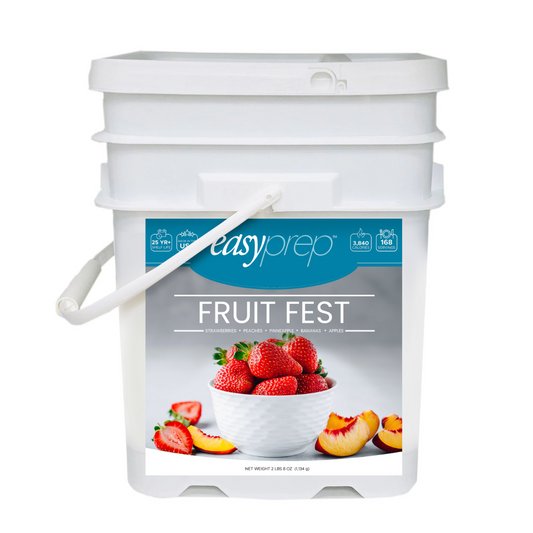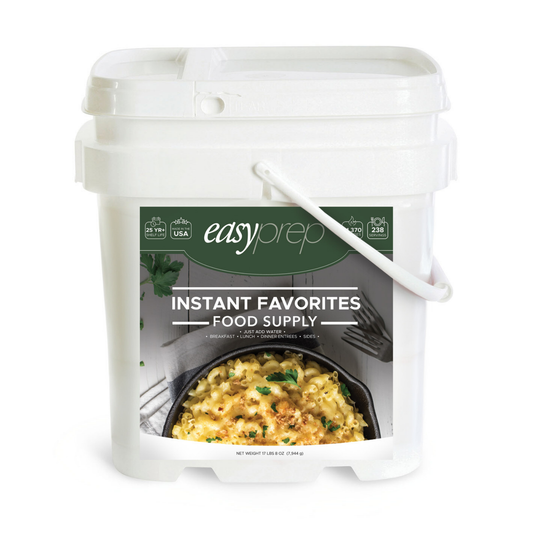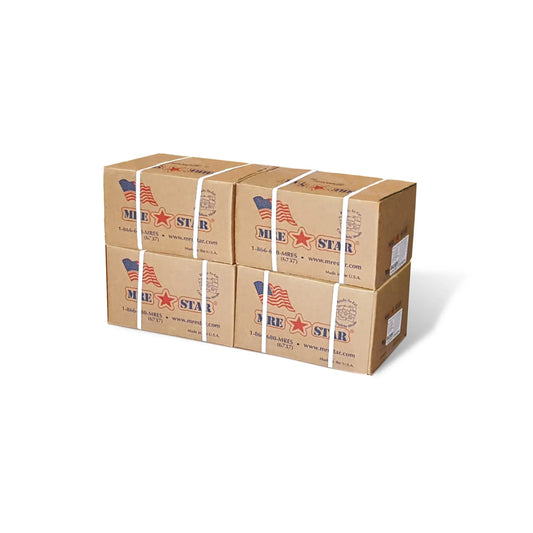Paracord can be an awesome tool in your preparedness arsenal. This durable nylon rope can be tied into tons of different designs including a paracord belt, bracelets, strengthened cords, pouches and more. If you’re in an emergency, you simply unwind the strong cord and use it to bind, haul or anything else that you might need.
So, whether you’re a beginner or an expert paracord lover, we have a design for you. Check out these paracord designs below. If you don’t want to spend time weaving your own bracelet, you can always let us do it for you.
What is Paracord?
Paracord, also known as parachute cord, is a soft, lightweight nylon rope that was originally used for parachuting. Typically, 550 paracord (which is the paracord used for our bracelets) is made of 32 strands of nylon sheath on the outside and seven strands of 2-ply nylon yarns on the inside (the “guts”). The 550 paracord is the same made for the government and has a minimum breaking strength of 550 lbs.

While paracord started out as a parachuter's tool, people quickly recognized its usefulness in other areas. Since the cord is quick-drying, rot- and mildew-resistant, it’s great for many purposes. Military units use it for securing packs, hanging covers and tents. Many military personnel even use the guts as fishing line.
Check out these designs:
Paracord Bracelet
Paracord Snake Design
Paracord Woven Watchband
Paracord Keychain
Paracord Belt Design
You'll Need
• 100 feet of
550 paracord (depending on measurements)
• Small needle-nose pliers
• Measuring device
• Cutters (ie. scissors, knife)
• Candle or lighter
• Nice belt buckle
Directions
Measuring - The first thing you'll need to figure out is how long your belt should be. This will vary depending on your waist size and how tight you weave the belt. The belt design consists of five strands of paracord - two core strands, two working strands and an extra strand for the belt loop. As a general rule, plan the length of each strand as follows:
Two core strands: Measurement of your waist X 2 + 24 inches = length of one core strand
Two working strands: Desired length of belt X 12 + 24 inches = length of one working strand
Belt loop: Plan for 36 inches of paracord
So, as a quick example. I have a 32-inch waist and I want a 36-inch long belt. That would mean I need 93 feet of paracord.
Two cord strands: 32 x 2 + 24 = 88 inches
I need two 88 inch cord strands.
Two working strands: 36 x 12 + 24 = 456 inches
I need two 456 inch working strands
Belt Loop: 36 inches
So, in total, I need 1, 124 inches of paracord - which is a little more than 93 feet.
(88 X 2) + (456 X 2) + 36 = 1,124 inches
Creating the Belt
1. Belt buckles have a front and back. With a large rodeo-style buckle, it's easy to tell which way it should be facing. However, with a smaller model look at the direction the buckle will be opening. Once you've figured out which way it will be facing, fold one of the core strands in half. Pass the loop of the core strand through the buckle to one side of the tongue. Repeat the process on the other side of the tongue.
 2.
2. The design of the belt is relatively simple. It's just a series of square knots passing across the core strand. So, the core strands will always be running parallel while the working strands do all the crossing. Place the buckle at the top of the table with the back facing you.
3. Place the buckle on a table with the back facing up.
4. Pass the inner right working strand (blue) over the inner left working strand (orange). Push the outer left working strand, the left core strands, and the inner right that is now the inner left working strand to the side a bit.
 5.
5. Pull the outer right working strand outward a bit, then pass the end in front of the right core strands perpendicular to their length.
 6.
6. Bring the now inner right working strand straight down across the outer right core strand, then behind the right core strands, and up out through the loop of the outer right core strand.
 7.
7. Pull the working strands tight.
 8.
8. Repeat the process in reverse with the same strands. This completes the first right square knot.
9. Push all of the right strands to the side so that you can work with the left strands.
 10.
10. Do the same thing on the left that you did on the right, but reverse the sides, so that you start by passing the outer left strand across the core strands to start.
 11.
11. Once you complete the first left square knot, pass the inner right working strand over the inner left working strand as you did before.
12. Repeat making square knots until you reach three inches less than the desired length of the belt.
 13.
13. Cut the inner two core strands (one from each side), and melt the ends.
14. Continue with the square knots and the exchange of the inner working strands in the same way as before until you have added three inches.
 15.
15. Tie the two outermost strands in a square knot around all of the other knots.
 16.
16. Cut all of the strands so that you have about an inch and a half long.
 17.
17. Using the pliers, weave all of the strands backward through the stitches on the back of the belt. This will give a tapered look and finish off the belt tip.
 The Belt Loop
18.
The Belt Loop
18. Decide where you want your catch loop, and pull the 36 inch strand through the v-shapes stitch on the back of the belt at that point.
 19.
19. Placing the center of the strand under the v-shaped stitch, pull the ends through the side loops on either side of the v-shaped stitch.
 20.
20. Pull the strands directly across the front of the belt and through the side loops on the side opposite your starting point.
21. The loops across the front of the belt created this way need to be loose enough for the belt to pass through, with a little extra room since they will thicken in a moment.
 22.
22. Treating the loops across the front of the belt as the core strands and the loose ends of the strand as the working strand, crate a series of square knots that lead back to the place where you first inserted the strand into the belt.
The method here is identical to the one used to make the belt except that you are only doing one cobra knot instead of the two parallel.
23. After tying your last knot, trim the working ends, melt them, and weave them into the back of the belt.
And there you have it! You have a beautiful paracord belt of about 100 feet of emergency rope! Be sure to stock up on
paracord and other emergency tools for car and home kits.
 Images courtesy of Rodneybones
Images courtesy of Rodneybones
What are some other applications you've encountered for paracord? Tell us your thoughts below!
 While paracord started out as a parachuter's tool, people quickly recognized its usefulness in other areas. Since the cord is quick-drying, rot- and mildew-resistant, it’s great for many purposes. Military units use it for securing packs, hanging covers and tents. Many military personnel even use the guts as fishing line.
Check out these designs:
Paracord Bracelet
Paracord Snake Design
Paracord Woven Watchband
Paracord Keychain
Paracord Belt Design
You'll Need
• 100 feet of 550 paracord (depending on measurements)
• Small needle-nose pliers
• Measuring device
• Cutters (ie. scissors, knife)
• Candle or lighter
• Nice belt buckle
While paracord started out as a parachuter's tool, people quickly recognized its usefulness in other areas. Since the cord is quick-drying, rot- and mildew-resistant, it’s great for many purposes. Military units use it for securing packs, hanging covers and tents. Many military personnel even use the guts as fishing line.
Check out these designs:
Paracord Bracelet
Paracord Snake Design
Paracord Woven Watchband
Paracord Keychain
Paracord Belt Design
You'll Need
• 100 feet of 550 paracord (depending on measurements)
• Small needle-nose pliers
• Measuring device
• Cutters (ie. scissors, knife)
• Candle or lighter
• Nice belt buckle
 2. The design of the belt is relatively simple. It's just a series of square knots passing across the core strand. So, the core strands will always be running parallel while the working strands do all the crossing. Place the buckle at the top of the table with the back facing you.
3. Place the buckle on a table with the back facing up.
4. Pass the inner right working strand (blue) over the inner left working strand (orange). Push the outer left working strand, the left core strands, and the inner right that is now the inner left working strand to the side a bit.
2. The design of the belt is relatively simple. It's just a series of square knots passing across the core strand. So, the core strands will always be running parallel while the working strands do all the crossing. Place the buckle at the top of the table with the back facing you.
3. Place the buckle on a table with the back facing up.
4. Pass the inner right working strand (blue) over the inner left working strand (orange). Push the outer left working strand, the left core strands, and the inner right that is now the inner left working strand to the side a bit.
 5. Pull the outer right working strand outward a bit, then pass the end in front of the right core strands perpendicular to their length.
5. Pull the outer right working strand outward a bit, then pass the end in front of the right core strands perpendicular to their length.
 6. Bring the now inner right working strand straight down across the outer right core strand, then behind the right core strands, and up out through the loop of the outer right core strand.
6. Bring the now inner right working strand straight down across the outer right core strand, then behind the right core strands, and up out through the loop of the outer right core strand.
 7. Pull the working strands tight.
7. Pull the working strands tight.
 8. Repeat the process in reverse with the same strands. This completes the first right square knot.
8. Repeat the process in reverse with the same strands. This completes the first right square knot.
 10. Do the same thing on the left that you did on the right, but reverse the sides, so that you start by passing the outer left strand across the core strands to start.
10. Do the same thing on the left that you did on the right, but reverse the sides, so that you start by passing the outer left strand across the core strands to start.
 11. Once you complete the first left square knot, pass the inner right working strand over the inner left working strand as you did before.
11. Once you complete the first left square knot, pass the inner right working strand over the inner left working strand as you did before.
 13. Cut the inner two core strands (one from each side), and melt the ends.
14. Continue with the square knots and the exchange of the inner working strands in the same way as before until you have added three inches.
13. Cut the inner two core strands (one from each side), and melt the ends.
14. Continue with the square knots and the exchange of the inner working strands in the same way as before until you have added three inches.
 15. Tie the two outermost strands in a square knot around all of the other knots.
15. Tie the two outermost strands in a square knot around all of the other knots.
 16. Cut all of the strands so that you have about an inch and a half long.
16. Cut all of the strands so that you have about an inch and a half long.
 17. Using the pliers, weave all of the strands backward through the stitches on the back of the belt. This will give a tapered look and finish off the belt tip.
17. Using the pliers, weave all of the strands backward through the stitches on the back of the belt. This will give a tapered look and finish off the belt tip.
 The Belt Loop
18. Decide where you want your catch loop, and pull the 36 inch strand through the v-shapes stitch on the back of the belt at that point.
The Belt Loop
18. Decide where you want your catch loop, and pull the 36 inch strand through the v-shapes stitch on the back of the belt at that point.
 19. Placing the center of the strand under the v-shaped stitch, pull the ends through the side loops on either side of the v-shaped stitch.
19. Placing the center of the strand under the v-shaped stitch, pull the ends through the side loops on either side of the v-shaped stitch.
 20. Pull the strands directly across the front of the belt and through the side loops on the side opposite your starting point.
20. Pull the strands directly across the front of the belt and through the side loops on the side opposite your starting point.
 22. Treating the loops across the front of the belt as the core strands and the loose ends of the strand as the working strand, crate a series of square knots that lead back to the place where you first inserted the strand into the belt.
The method here is identical to the one used to make the belt except that you are only doing one cobra knot instead of the two parallel.
22. Treating the loops across the front of the belt as the core strands and the loose ends of the strand as the working strand, crate a series of square knots that lead back to the place where you first inserted the strand into the belt.
The method here is identical to the one used to make the belt except that you are only doing one cobra knot instead of the two parallel.
 Images courtesy of Rodneybones
What are some other applications you've encountered for paracord? Tell us your thoughts below!
Images courtesy of Rodneybones
What are some other applications you've encountered for paracord? Tell us your thoughts below!
 While paracord started out as a parachuter's tool, people quickly recognized its usefulness in other areas. Since the cord is quick-drying, rot- and mildew-resistant, it’s great for many purposes. Military units use it for securing packs, hanging covers and tents. Many military personnel even use the guts as fishing line.
Check out these designs:
Paracord Bracelet
Paracord Snake Design
Paracord Woven Watchband
Paracord Keychain
Paracord Belt Design
You'll Need
• 100 feet of 550 paracord (depending on measurements)
• Small needle-nose pliers
• Measuring device
• Cutters (ie. scissors, knife)
• Candle or lighter
• Nice belt buckle
While paracord started out as a parachuter's tool, people quickly recognized its usefulness in other areas. Since the cord is quick-drying, rot- and mildew-resistant, it’s great for many purposes. Military units use it for securing packs, hanging covers and tents. Many military personnel even use the guts as fishing line.
Check out these designs:
Paracord Bracelet
Paracord Snake Design
Paracord Woven Watchband
Paracord Keychain
Paracord Belt Design
You'll Need
• 100 feet of 550 paracord (depending on measurements)
• Small needle-nose pliers
• Measuring device
• Cutters (ie. scissors, knife)
• Candle or lighter
• Nice belt buckle
 2. The design of the belt is relatively simple. It's just a series of square knots passing across the core strand. So, the core strands will always be running parallel while the working strands do all the crossing. Place the buckle at the top of the table with the back facing you.
3. Place the buckle on a table with the back facing up.
4. Pass the inner right working strand (blue) over the inner left working strand (orange). Push the outer left working strand, the left core strands, and the inner right that is now the inner left working strand to the side a bit.
2. The design of the belt is relatively simple. It's just a series of square knots passing across the core strand. So, the core strands will always be running parallel while the working strands do all the crossing. Place the buckle at the top of the table with the back facing you.
3. Place the buckle on a table with the back facing up.
4. Pass the inner right working strand (blue) over the inner left working strand (orange). Push the outer left working strand, the left core strands, and the inner right that is now the inner left working strand to the side a bit.
 5. Pull the outer right working strand outward a bit, then pass the end in front of the right core strands perpendicular to their length.
5. Pull the outer right working strand outward a bit, then pass the end in front of the right core strands perpendicular to their length.
 6. Bring the now inner right working strand straight down across the outer right core strand, then behind the right core strands, and up out through the loop of the outer right core strand.
6. Bring the now inner right working strand straight down across the outer right core strand, then behind the right core strands, and up out through the loop of the outer right core strand.
 7. Pull the working strands tight.
7. Pull the working strands tight.
 8. Repeat the process in reverse with the same strands. This completes the first right square knot.
8. Repeat the process in reverse with the same strands. This completes the first right square knot.



 10. Do the same thing on the left that you did on the right, but reverse the sides, so that you start by passing the outer left strand across the core strands to start.
10. Do the same thing on the left that you did on the right, but reverse the sides, so that you start by passing the outer left strand across the core strands to start.
 11. Once you complete the first left square knot, pass the inner right working strand over the inner left working strand as you did before.
11. Once you complete the first left square knot, pass the inner right working strand over the inner left working strand as you did before.



 13. Cut the inner two core strands (one from each side), and melt the ends.
14. Continue with the square knots and the exchange of the inner working strands in the same way as before until you have added three inches.
13. Cut the inner two core strands (one from each side), and melt the ends.
14. Continue with the square knots and the exchange of the inner working strands in the same way as before until you have added three inches.
 15. Tie the two outermost strands in a square knot around all of the other knots.
15. Tie the two outermost strands in a square knot around all of the other knots.
 16. Cut all of the strands so that you have about an inch and a half long.
16. Cut all of the strands so that you have about an inch and a half long.
 17. Using the pliers, weave all of the strands backward through the stitches on the back of the belt. This will give a tapered look and finish off the belt tip.
17. Using the pliers, weave all of the strands backward through the stitches on the back of the belt. This will give a tapered look and finish off the belt tip.
 The Belt Loop
18. Decide where you want your catch loop, and pull the 36 inch strand through the v-shapes stitch on the back of the belt at that point.
The Belt Loop
18. Decide where you want your catch loop, and pull the 36 inch strand through the v-shapes stitch on the back of the belt at that point.
 19. Placing the center of the strand under the v-shaped stitch, pull the ends through the side loops on either side of the v-shaped stitch.
19. Placing the center of the strand under the v-shaped stitch, pull the ends through the side loops on either side of the v-shaped stitch.
 20. Pull the strands directly across the front of the belt and through the side loops on the side opposite your starting point.
20. Pull the strands directly across the front of the belt and through the side loops on the side opposite your starting point.


 22. Treating the loops across the front of the belt as the core strands and the loose ends of the strand as the working strand, crate a series of square knots that lead back to the place where you first inserted the strand into the belt.
The method here is identical to the one used to make the belt except that you are only doing one cobra knot instead of the two parallel.
22. Treating the loops across the front of the belt as the core strands and the loose ends of the strand as the working strand, crate a series of square knots that lead back to the place where you first inserted the strand into the belt.
The method here is identical to the one used to make the belt except that you are only doing one cobra knot instead of the two parallel.








 Images courtesy of Rodneybones
What are some other applications you've encountered for paracord? Tell us your thoughts below!
Images courtesy of Rodneybones
What are some other applications you've encountered for paracord? Tell us your thoughts below!











